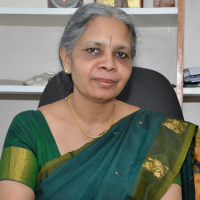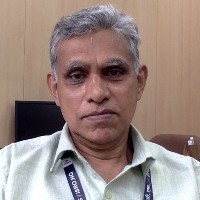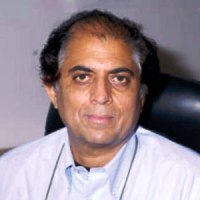Directors' Messages

Prof. Annapurni Subramaniam |
"The Indian Institute of Astrophysics, as an autonomous body, was formed on 1st April 1971 and was registered as a Society. It was earlier known as the Astrophysical Observatory, which was under the Ministry of Tourism and Civil Aviation. Dr. M.K.V. Bappu was entrusted with the responsibility of leading the Institute at the time of this transition, who was eager to expand its facilities. Dr. Bappu’s dream of the indigenous 2.3m optical telescope was completed by Prof. J.C.Bhattacharyya, who headed the Institute after Dr. Bappu’s untimely demise. The Institute came under the care of the Ministry of Science and Technology in 1985 and has been generously supported and guided by the Department of Science and Technology since then. The facilities that are set up in the last 50 years, continue to perform, producing scientific results, and reaching noteworthy milestones. The Institute celebrates several milestones this year, apart from the IIA’s 50th year. The UVIT on ASTROSAT, delivered by IIA will complete 5 years of in-orbit operation and the 2-m Himalayan Chandra Telescope will complete 2 decades since its first light. The last couple of decades saw the growth of student programs and astronomical instrumentation. The Institute carries forward its rich heritage, embracing the dynamic new generation of scientists and staff to its growing family. The Institute is heading into the next decade with the strengthening of its Solar facilities with the Space Coronagraph, VELC, on the ADITYA-L1 mission, and the National Large Solar Telescope in Ladakh. The next generation UV space mission is expected to see the light towards the end of the next decade. The partnership in the International Thirty Meter Telescope Observatory is blossoming with the first light expected after the next decade. The ambitious plan to build a national Large Optical-IR telescope in the country will be the major project for the next decade and more. These ambitious initiatives with a vibrant scientific pursuit will lay the foundation of the Institute’s growth into the next 50 years." |

Dr. P. Sreekumar |
"The Indian Institute of Astrophysics is a unique center of research in India, with its wide spectrum of astronomy research, ranging from theoretical studies, observations across nearly the full electromagnetic spectrum, computational and simulation studies and experimental developments. With campuses spread across the nation, this institute has a rich history of building up facilities from ground-based to space-based, all the way from an empty site to a functioning world-class telescope and providing access to national and international users. The vibrant student participation in the full spectrum of research and the unique and successful collaborative MTech/PhD program in Astronomical Instrumentation, makes IIA, very special. This also places demands on IIA to be the key conscience-keeper for broad-spectrum astronomy research in India. The past 50 years have been very productive with large focus on national capacity building. In the next 50 years, IIA can and must be the main driver for Indian astronomy to reach the glorious heights we often dream of. I congratulate the IIA family for their achievements, their tenacity with which they work collectively to accomplish goals and the openness with which they embrace the wider community. As one who is fortunate to have been associated with the IIA family, my greetings and best wishes on this golden jubilee celebration." |

Prof. S. S. Hasan |
"It is a great pleasure for me to send this message for the Golden Jubilee celebrations of the Indian Institute of Astrophysics beginning on August 10, 2020, the birthday of its founding Director Professor M.K.V. Bappu. This is a moment to reflect on IIA’s achievements and to pay tribute to the persons who have guided its destiny from its inception. I am proud to have been part of the IIA family for over four decades, during which period I have had the privilege and honour to be closely involved with its growth. IIA is amongst the leading astronomy institutes in the world. It has played a major role in carrying out frontline research in the astronomical and allied sciences, as well as in the creation of a pool of excellent scientists in the country. In its incredible growth trajectory over the past 50 years, several major programmes have been realized. The 2.3-m Vainu Bappu telescope, the 2-m Himalayan Chandra Telescope and the Ultraviolet Imaging Telescope in space on ASTROSAT are some fine examples of the truly novel initiatives in this direction. Several new projects are underway such as the space coronagraph on ADITYA, Indian participation in the international Thirty Metre Telescope project and the proposed National Large Solar telescope. These will be truly outstanding contributions which will propel India into the foremost league of countries with astronomy facilities. Furthermore, IIA’s programmes will continue to inspire an increasing number of young people to take up a career in science, as well as contribute to a fusion of science, society and culture. I congratulate IIA for all its accomplishments in the past 50 years and extend my heartiest felicitations to its staff and students. I am confident that the Institute will continue to grow from strength to strength and to inspire the next generation through its multifaceted activities." |

Prof. Ramanath Cowsik |
"The Indian Institute of Astrophysics is one of the oldest academic institutions in India, tracing back its origins to 1786, when it functioned as a private astronomical observatory in Egmore in Madras. It made many pioneering discoveries, including the discovery of the element Helium. Professor Vainu Bappu, the eminent astronomer, and Director of the Observatory, which had moved to Kodaikanal, enlarged its purview under the generous support of the Government of India. He named it “The Indian Institute of Astrophysics” to reflect its broader mission of research and education. From that time the Institute expanded its activities with optical telescopes at Kavalur, Tamil Nadu, and Hanle, Ladakh, and decametric radio arrays at Gauribidanur, and Mauritius; further more gamma-ray telescopes were constructed at Hanle, and satellite borne ultraviolet imaging telescope was launched into space few years ago by ISRO. Since the time of Bappu, several directors have rendered dedicated service to the Institute, and the Department of Science and Technology has continued to provide generous support. Currently, the Institute is making great strides under the dynamic leadership of its director, Professor Annapurni Subramaniam. This golden jubilee year is for remembrances and for looking ahead to take the Institute from crescendo to crescendo. I send my warmest greetings to everyone, and best wishes for a resounding success of the celebrations." |
